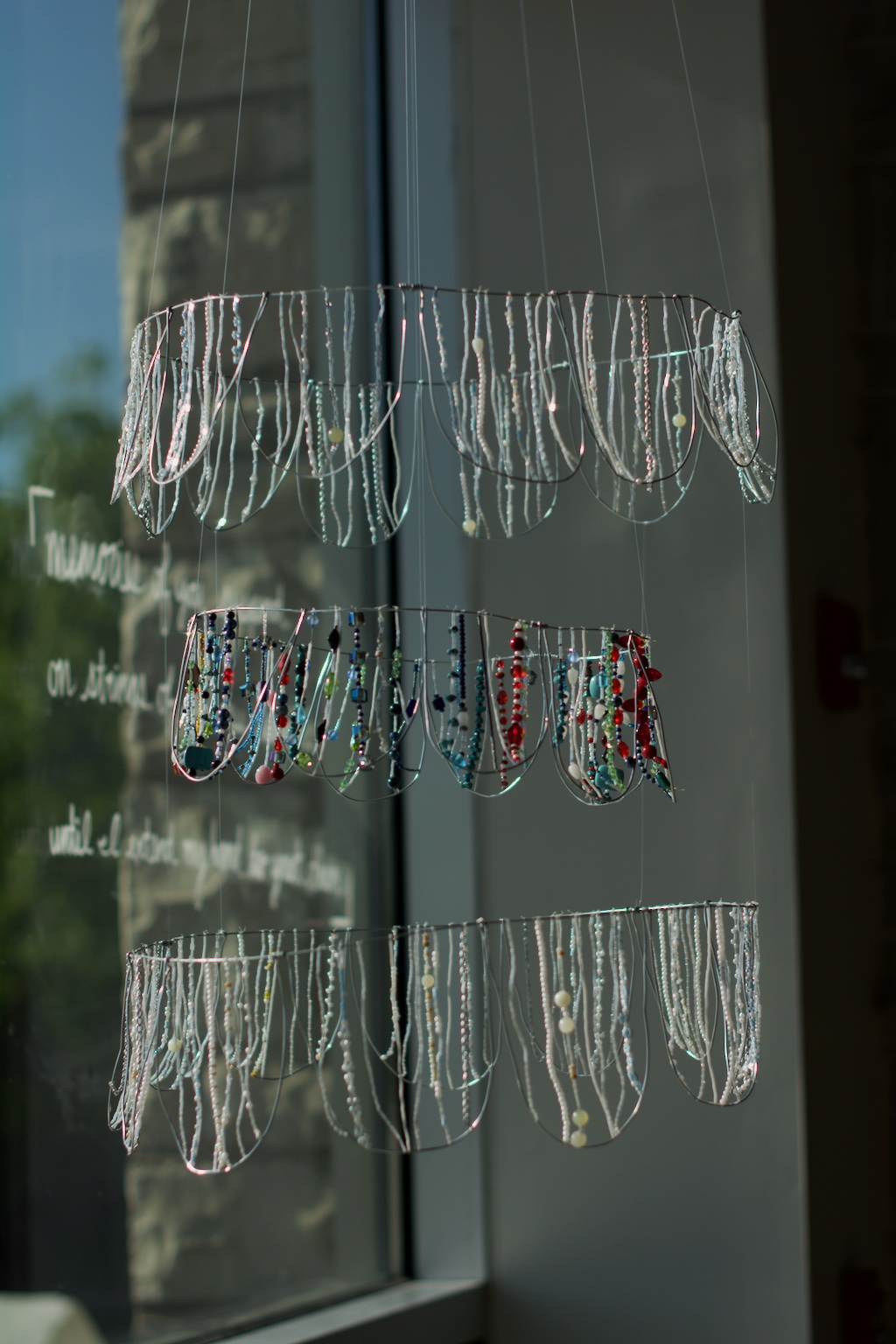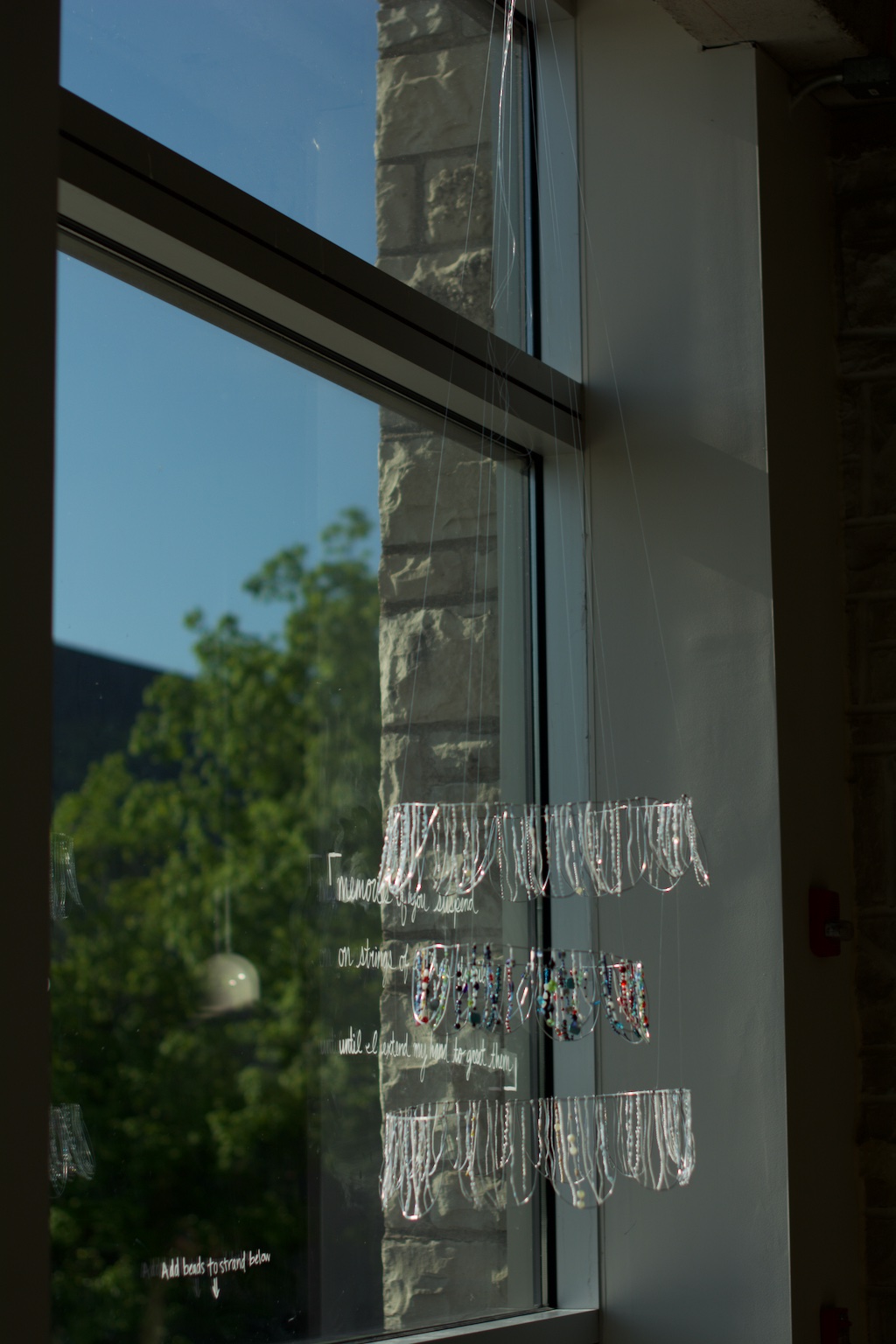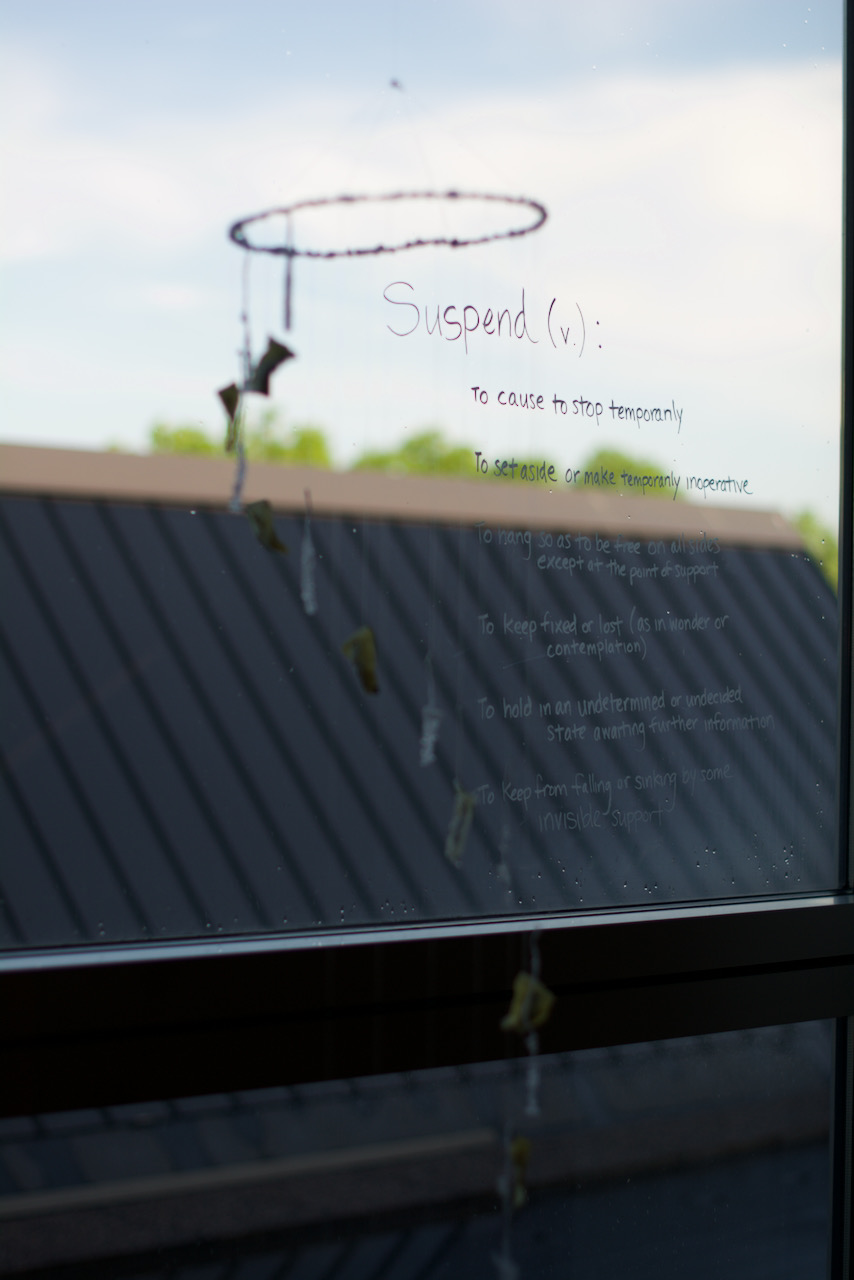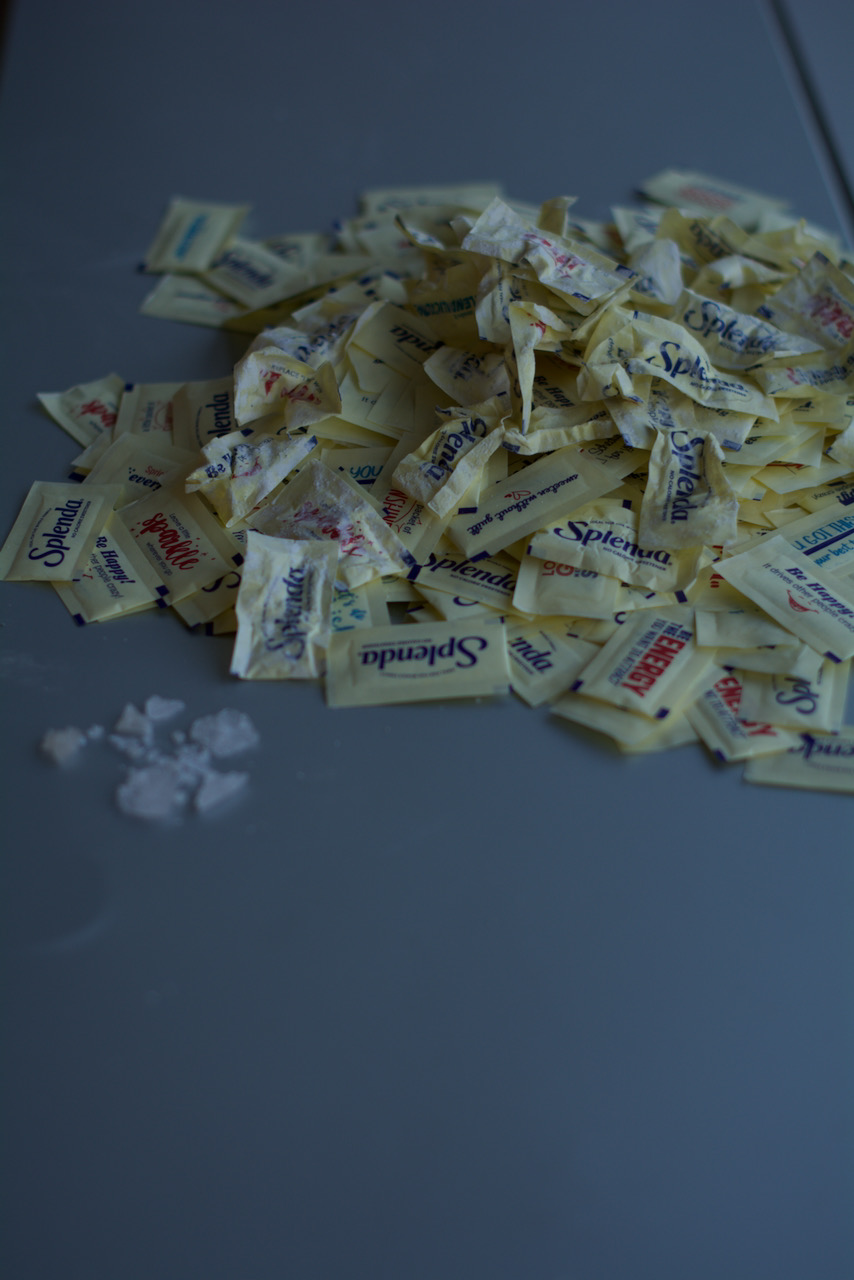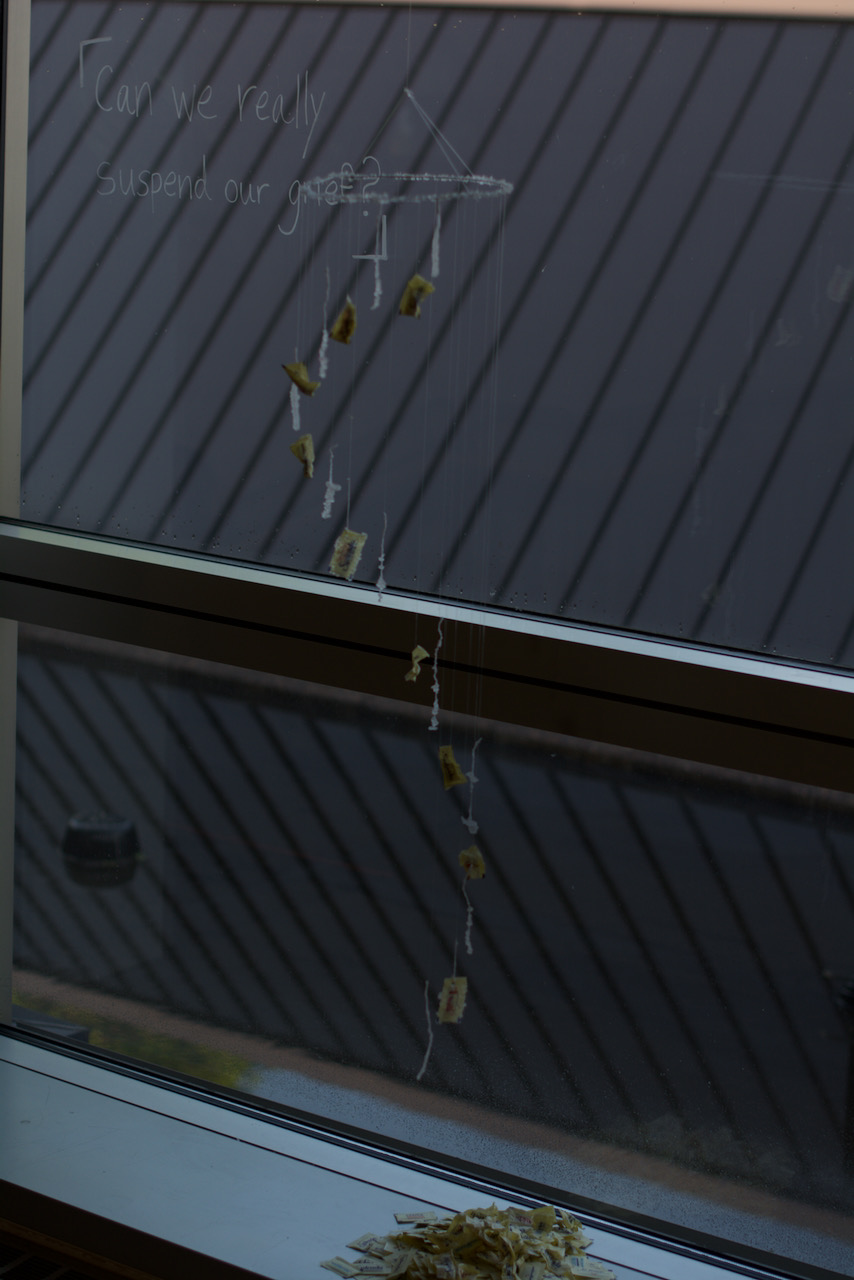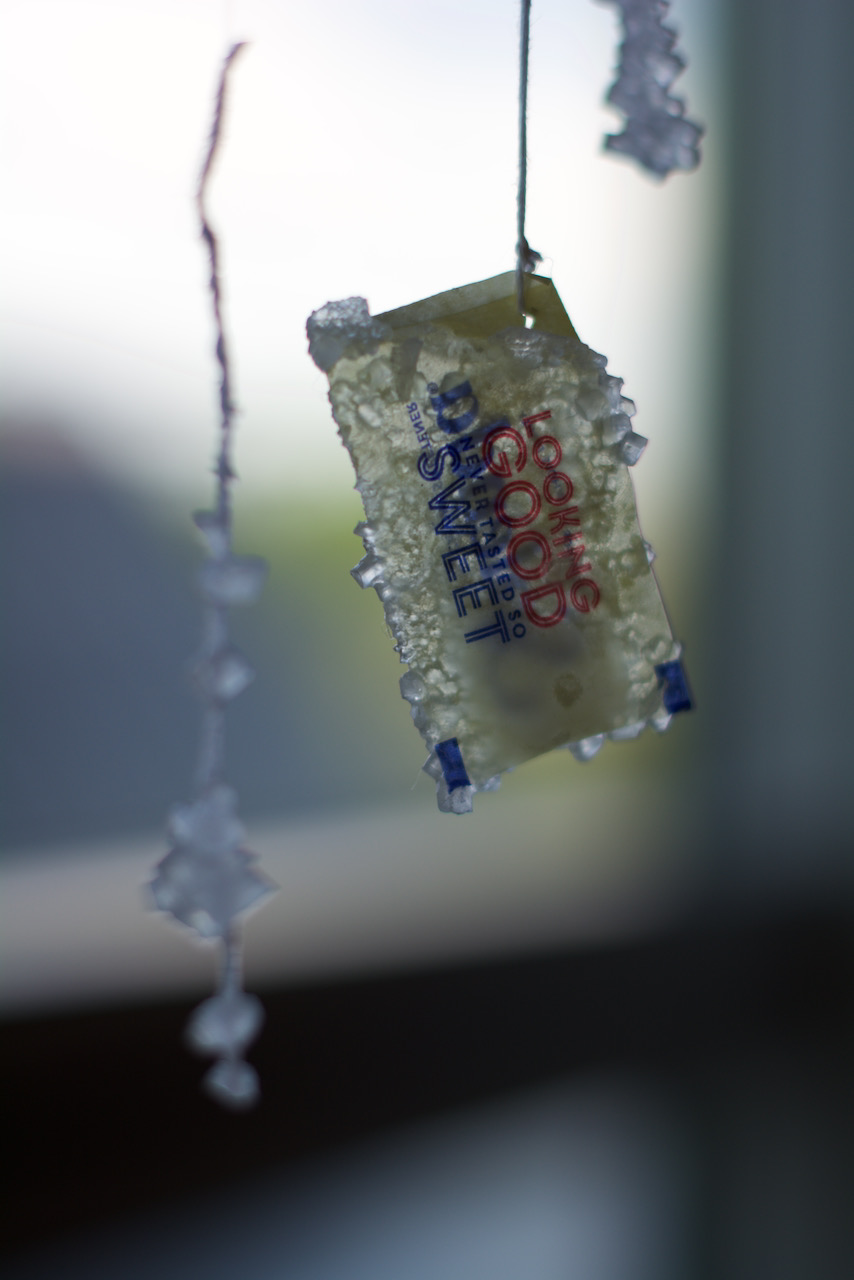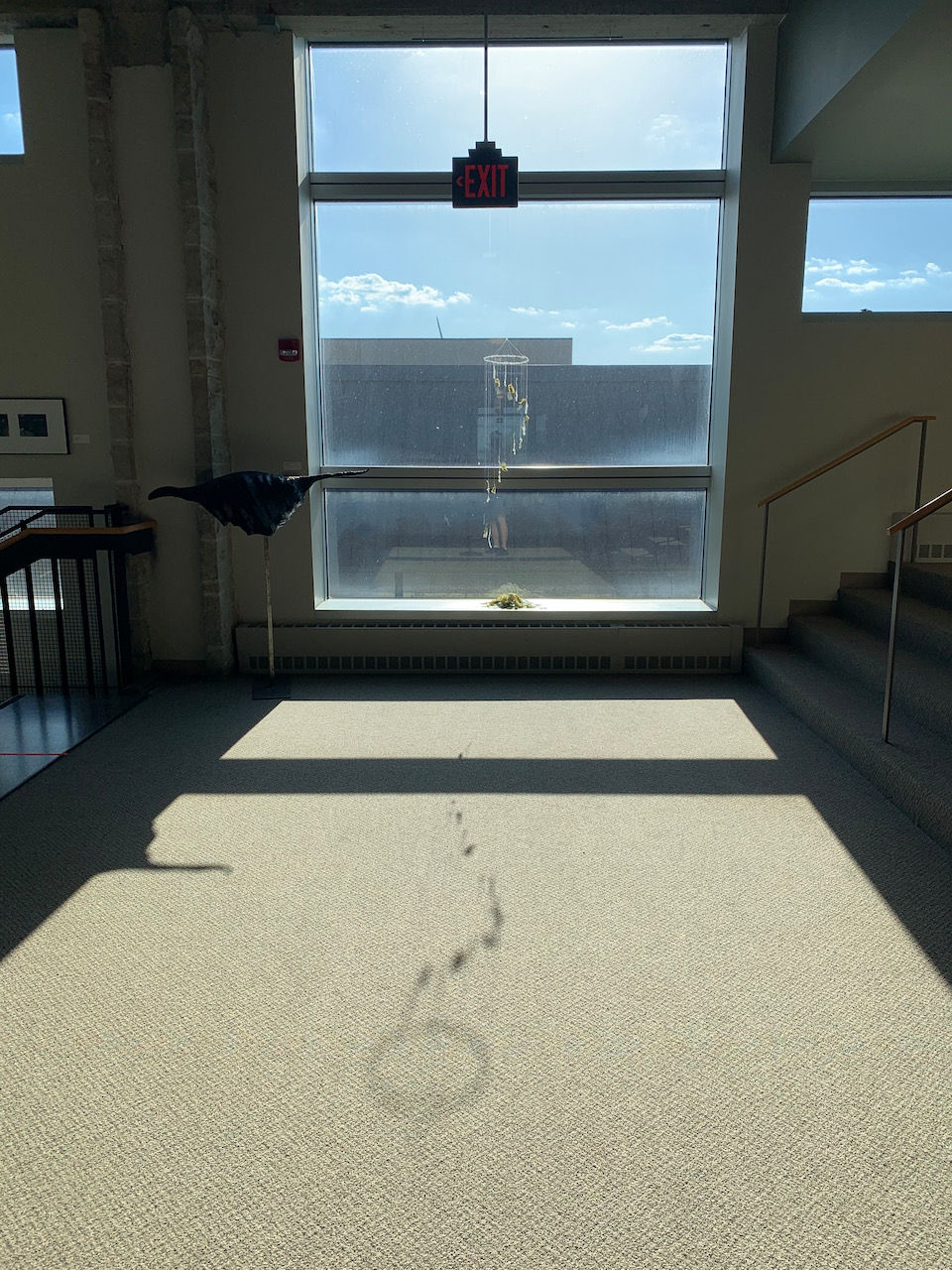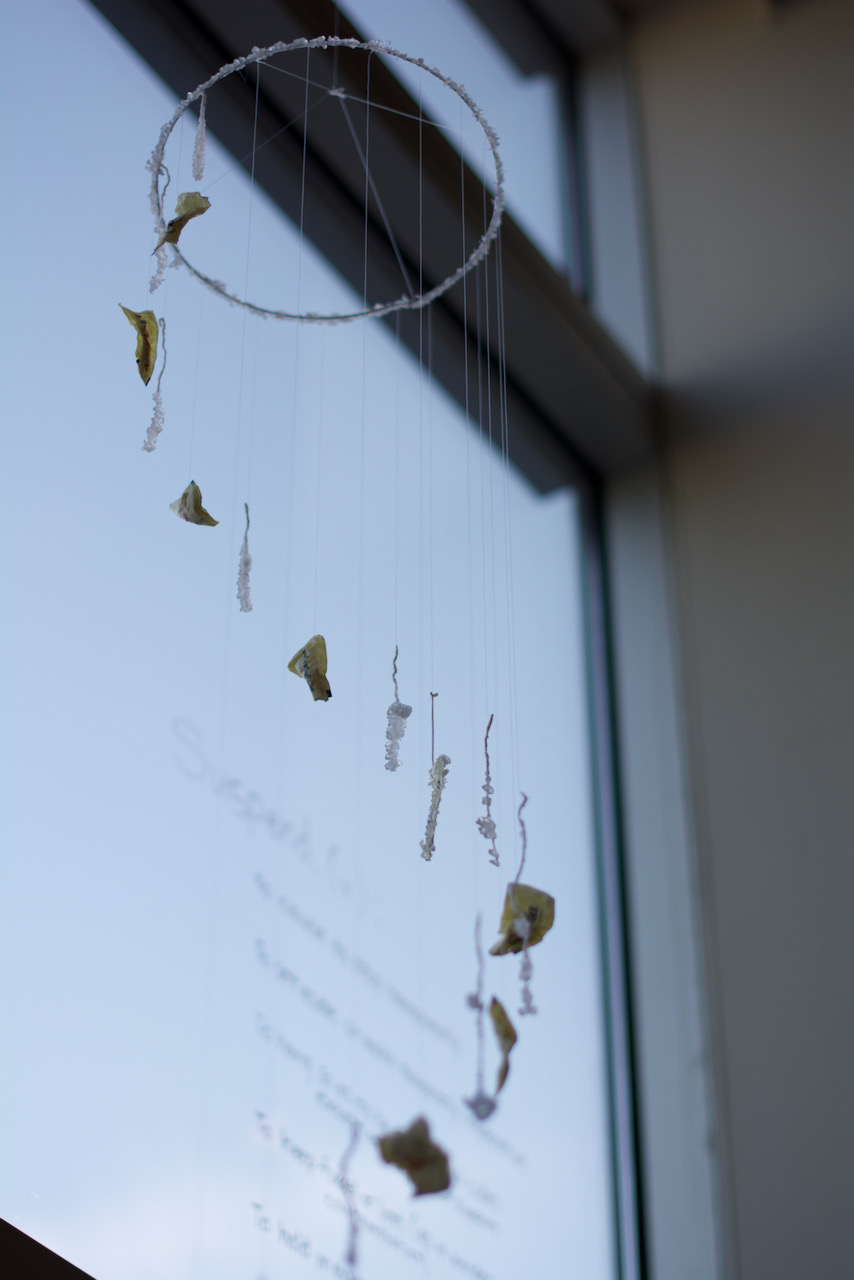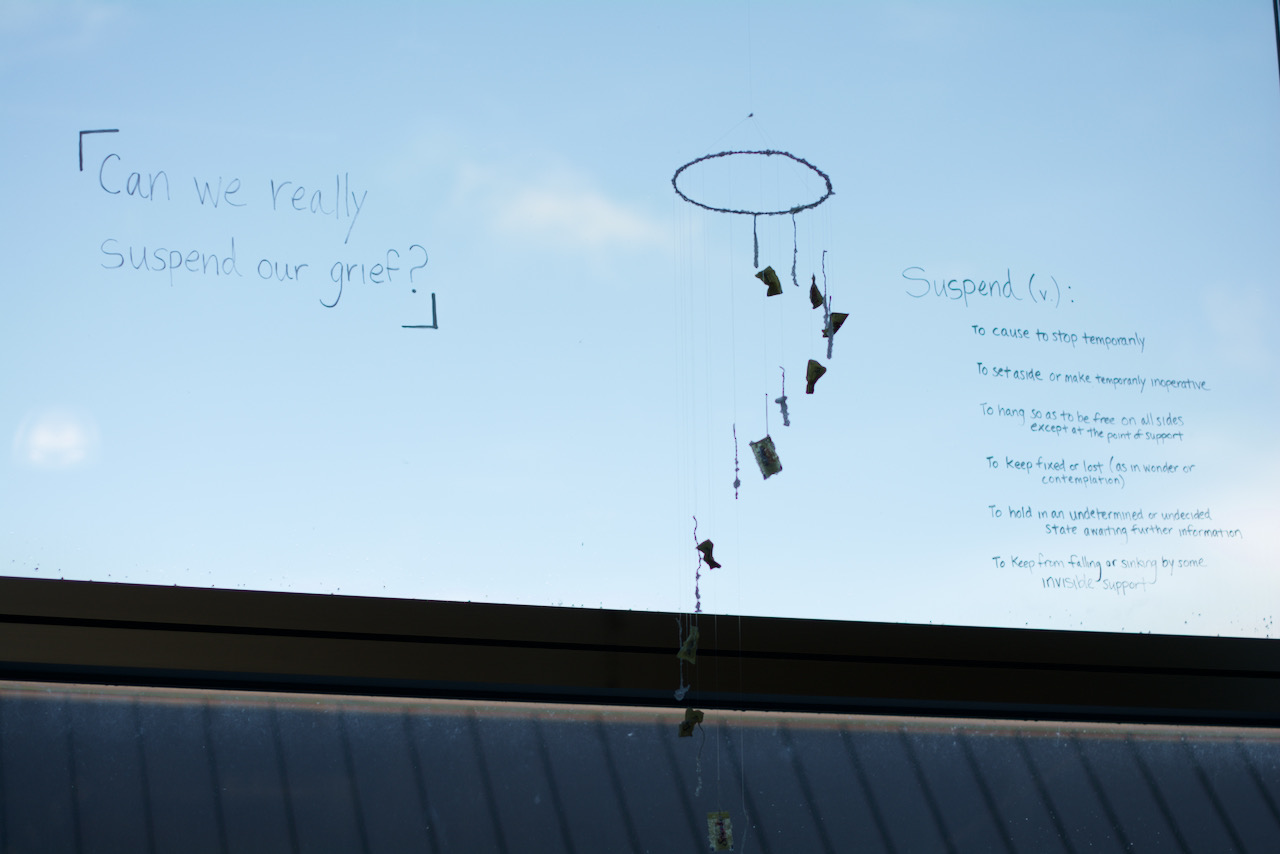Suspending Grief revolves around the question, Can we ever suspend our grief? By playing with the various definitions of “suspend,” viewers are invited to envision their own grief as chandeliers suspended above them and contemplate whether grief can ever truly transcend our daily existence. The chandeliers are made from unconventional, mundane materials, from sugar crystals and Splenda sugar packets to seed beads, which are associated with different memories of my late stepmom. After her unexpected passing in February, this installation reflects my lived experience of grief—away from home.
Placed in opposite windows, the chandeliers catch light at different times of the day, the beads scintillate in the morning while the shadows of sugar crystals stretch across the floor in the evening. The windows serve as a space to process death in the abstract. Since most chandeliers are hung high, they appear as weightless, floating clouds seen from below. In this installation, viewers see how grief hangs over us too, though heavy and looming. Alongside the sculptures is text written on the glass, repeating the installation’s guiding question, offering multiple definitions of the word “suspend”, and sharing an excerpt of a poem about memory and tangibility: Memories of you suspend / On strings of stillness tangible / Until I extend my hand to greet them. Depending on what time of day the installation is viewed, the text might fade into the sky with the thin wires, clear fishing line supports, and particular memories. The repeated language of “suspend” between the installations link the two together and allow the viewer to make a physical journey between both ends.
Though they are not light fixtures in themselves, these chandeliers illuminate different ways of manifesting grief. Both involve time-consuming processes, from the meticulous beading to patient crystal growing. The tiered beaded chandelier uses leftover rosary beads from my stepmother’s jewelry making days. There are two levels of ritual involved in both the original religious purpose of the beads and in the repetitive stringing process. At times, this process was more meditative while at other times it grew tedious. Sometimes, I sat with friends while I worked, inviting them to collaborate by adding their own strands while at other times I sat alone and worked. This artistic process reminded me of my own grieving behavioral patterns.
In the beaded chandelier, the controlled patterns (or lack thereof) of each bead strand represent my tight grip or easing of control over my artistic and grieving parallel processes. This tension exists within the work which can be modeled by spinning the inner and outer layers in different directions simultaneously. For friends who did not take part in the original collaboration, there is an invitation to add beads to a communal strand as an act of personal prayer or empathetic interaction.
The Splenda chandelier examines the over-sentimentalization of the past. Given our complicated and conflicted relationship, I notice myself sugarcoating the memories of my stepmom, often distorting them into something purely happy yet unrecognizable. While emulating the ornate glass of real chandeliers, the sugar crystals reflect a literal sugarcoating of memory while bearing a contrasting preservative function. Meanwhile, the spiral layering depicts the ruminating, cyclical thinking that occurs when trying to make sense of the mess of what is left behind when someone dies, as shown by the chaotic heap of Splenda packets below.
This installation is part of an ongoing, multi-disciplinary exploration of the construction of memory and grief. Through experimenting with film photography, embroidery, beading, and installation, this series unravels and tangles our initial assumptions of our pasts and inspects the complex ways we embellish our memories due to grief.
in loving memory of Andy Dunmire


